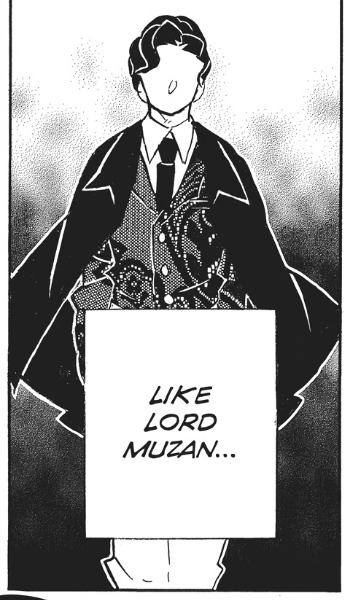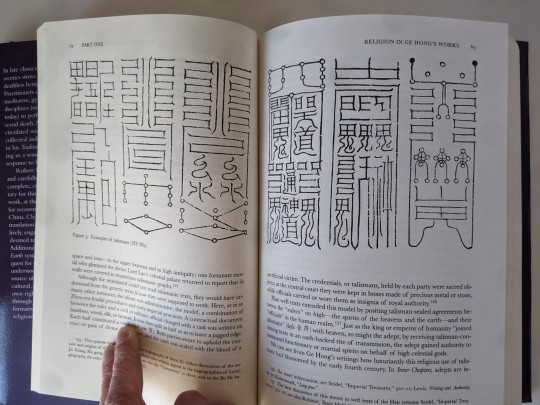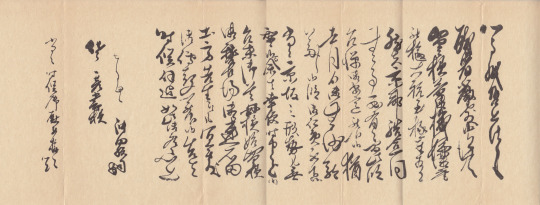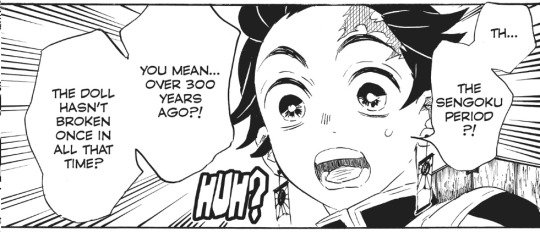#history research
Text
Play this for the people who are NOT awake!
Holy cow!
They kept us distracted for a long time while these were getting enacted for total dominance where we would never have any control over our own government! They called it the "New World Order." 🤔
#pay attention#educate yourselves#educate yourself#knowledge is power#reeducate yourself#reeducate yourselves#think for yourselves#think about it#think for yourself#do your homework#do some research#do your own research#do your research#history research#question everything#ask yourself questions
1K notes
·
View notes
Text

Maybe I should make a "handsome samurai of the week" column? 🤔
Here we have Obata Tokujiro, on the left, and Matsuyama Toan, on the right, photographed in the late Edo period.
Obata Tokujiro was a teacher of both English and science at Kaiseijo, a school of Western learning in Edo, which was one of the forerunners of what is now Tokyo University. During the Meiji period he traveled both Europe and the United States before returning to Japan, and he later became head of Keio University.
Matsuyama Toan was a doctor, head of Keio University School of Medicine, founder of Tokyo Jikei University School of Medicine, and translator of the first English-language medical book published in Japan, among other things.
#history notes#historical notes#history reference#historical reference#history research#historical research#photos#portraits#samurai#Edo period#late Edo period#Bakumatsu period#handsome samurai
119 notes
·
View notes
Text
From a thing to wear to an icon of culture 👘

There is this hidden detail in Muzan that when I noticed I could not help but smile. Remember how he said that the thing he hated the most was change? Well coming from someone that had to live in 5 different eras is kinda funny, and it's even funny when you realize that he ended up adopting the Western fashion pretty fast. But that's the twist, if you look at Muzan's vest you come to realize that it's the exact same pattern as the kimono he used to wear. The best part? That was a thing that actually happened in history.

Wanting or not, the clothing that the people used to wear represents the history they lived through. "To look seriously at art objects of the everyday, such as clothes - their discourse and practices, their meaning-bearing forms and their codes of internal and external interpretations - in an essential, and often neglected, component of any study of modern aesthetics." - Slade, 2009
Yofuku [Western Clothing] is a type of clothing that is now common all over Japan, but during a lot of time, it was a type of clothes that only selected few grew up with. The 1st contacts with these types of clothing [even if extremely different from what we now call western clothing] was in the 16th century when the Portuguese arrived in Tanegashima. With them came not only different shapes but also different fabrics. But the “true” introduction to western fashion would only happen with Commodore Matthew Perry, catharsis to the Meiji restoration, where Emperor Meiji would start to dress in a typical western military outfit, and soon after the empress would start to aper in the typical victorian dresses.
In the Edo period clothing visually distinguished the social classes. "Certain articles of clothing visibly differentiated people of diverse social classes, and simultaneously distinguished an individual within a specific group. The materials, motifs and construction of military campaign coats, for example, marked their wearers as men belonging to the military class." - Milhaupt, 2014; Samurai ranked on the top, followed by farmers, artisans, and merchants on the bottom. What happen was that most of the times the samurai where poor while the merchants lived in economic success. But samurai had the privilege of using certain types of fabrics and patters, even tho most of the times they could not afford them, and so, the merchants would start to adapt the fabrics and patters they were allowed to were and would end up becoming the patrons of arts and fashion. The trends of fashion would later be documented in ukiyo-e, and not only in the work of art sense, but also in pattern books were people could browse the prevailing styles.
After the 1st contacts with the westerners, what would start to happen is that slowly but surely the Japanese would start to integrate the western ways of dressing into their lives. The Japanese started to introduce some of its elements with the kimono, shoes, hats, gloves, glasses, umbrellas, etc. Then in the 19th century a full change would happen starting from the man in the highest classes to the man in the lowest classes. The emperor decided to cut his topknot in 1872 and started to dress in western clothing in official appearances, also changing some of the more cultural habits like eating meat and more wester kind of meals. In the official portraits he appears adorned with a French-style military uniform with ornaments in gold and ostrich feathers. Before this, the emperor was never a public figure, so when pictures of the Meiji Emperor became available, and he started to appear more publicly the nation would have their eyes on him and start to imitate him.
Women would, for the longest time still dress in the now classic kimono, that would develop as a symbol of the old and traditional Japan. The idea of the western clothing being associated with a modernized Japan and the Kimono [that literally means “thing to wear”] to a traditional country came from the fact that the emperor would choose to wear western clothes in more formal, international events, and for religious national events would choose the traditional Japanese court dress. The western clothes will end up being a symbol of the modernization of Japan, and the Meiji government would use it as yet another tool of national control.
For all the Japanese born after 1945 the western clothes became the norm. Most families would end up transforming their kimonos into western clothing pieces, and the patterns sold for kimonos would double for kimonos and western clothing.

But it is funny to notice how despite it all Muzan is the one being presented in western clothing and Ubuyashiki is the one in traditional clothes, always being the contradiction of the other, but also it can also be interpretated as the Ubuyashibi family being "trapped" in the past since in hundred years the corps never killed an upper moon, the history never changed. And Muzan in his ever-changing cycle of his life, in the changing of eras and changing of personas he decided to reuse the only thing he could: his clothes. And just like him, they would adapt through the times.

MILHAUPT, Terry Satsuki. 2014 - Kimono: A Modern History. London: Reaktion Books [Ebook];
SLADE, Toby. 2009 - Japanese Fashion: A cultural History. Oxford, Berg. [Ebook];
#demon slayer#history#demon slayer from history to fantasy#demonslayerfromhistorytofantasy#history research#japanese history#demon slayer history#kimetsu no yaiba#research#demon slayer muzan#muzan kibutsuji#ubuyashiki#kimono
187 notes
·
View notes
Text
I actually do a lot of research and am collecting what may one day be an entire bookshelf's worth of reference books, so I thought I'd share one. This is my pride and joy, at least as far as research goes:

To Live as Long as Heaven and Earth is a translation of the Shenxian Zhuan, a series of biographies of Daoist immortals by Ge Hong. The (extensive) introduction by Professor Campany also includes a lot of the translator's own research, drawing on various sources in order to provide a good overview of practices attributed to Daoists in common folklore. If you're interested in the Xianxia and Wuxia genres and their origins, I think this is an invaluable English-language text. Its focus is entirely on traditional beliefs, but through it you can see just how much of the modern fantasy genre in China is based entirely on traditional folklore.

The images of talismans, for example, are extremely familiar to any viewers of modern fantasy dramas or donghua. These look very similar to the talismans we see in the Modao Zushi donghua, don't they?

This is a really interesting little section describing levels of ascendance. It's a lot simpler than modern novels with their million stages of core formation, isn't it? (Though, to be fair, most novels I read are by authors who don't care to get into that level of detail and focus on characters and storytelling, thank goodness!) The 'tianxian' sound a bit like heavenly officials in more recent stories, don't they, whereas the dixian are regular immortal cultivators who still live on earth. The use of shijie (corpse simulacrums) meanwhile, seems to mainly be maintained as a means of faking one's death, not as a means of escaping the notice of the officials of the underworld!
The main paths of immortality outlined in Ge Hong's work are: internal cultivation, external cultivation (alchemy), the arts of the bedchamber, and diet. The first three are very familiar, but I've noticed that diet-based cultivation shows up much more rarely in modern stories. I can only immediately think of Ye Baiyi from Word of Honour, who begins to age again after descending from the mountains and imbibing mortal food once more.
One thing I found interesting is that most accounts of immortals flying either depict them doing so under their own power, or placing a talisman within a bamboo staff and flying on that (or sending some poor soul on a sudden trip across the country!). Flying swords seem to be a much more modern convention.
One thing that's really amusing to me is how much energy the author (Ge Hong, not the translator) dedicated to poking fun at Confucius and Confucianism. Even though the three major religions eventually became known as the Three Teachings and are in modern terms viewed as very harmonious and complementary, historically there was often a huge amount of religious tension. Confucians and Daoists bickered with each other a lot, and then Buddhists got into the fray as well as Buddhism became more and more popular in East Asia. While Buddhism was present in China in Ge Hong's time, it had yet to reach its later popularity; this is probably why Buddhism is barely mentioned in Ge Hong's writing. There are a few indirect references and borrowings from Buddhist tales, and Professor Campany posits that some were intentionally used in competition with Buddhism, while others may have been added by later compilers/transcribers of the text who were Buddhists themselves.
A lot of Cnovels depict this sort of religious tension (Thousand Autumns is a good example), and it's really interesting to see that in these translated historical texts. Even though there are plenty of texts I can't get access to and/or wouldn't be able to read in the original language, there is a huge amount of English-language and translated scholarship on Chinese history available. A lot of it is fascinating to read from a perspective of a fan of Chinese fantasy, since the genre draws so heavily on real history and folklore.
102 notes
·
View notes
Text

People who claim to research WW2 when someone says the people involved were their own individuals and not inherently bad people just for being from a certain country 😱😱😱.
(Someone got mad at me for telling them to watch Ordinary Men after they got mad at me for posting pictures of French girls who dated German’s). (On my side blog dedicated to historical photos no less).


#history#ww2#world war two#world war 2#second world war#historical#studying history#researching history#history research#ww2 research#studying ww2
8 notes
·
View notes
Text
Fun fact: Samuel Colt before 1855, when he was manufacturing the "gun that won the West," started his career by selling hits of nitrous oxide to audiences looking for a cheap high. Colt was also referred to by critics as the "revolving patriot," due to his selling of guns to the North and the South in the arms build-up before the Civil War. One thing is for sure, Colt was an innovator but with an illusive, dark past.
Source: Thornton, Steve. “2 Wicked Sam Colt.” Wicked Hartford, The History Press, Charleston, SC, 2017, pp. 25.
#histoire#history#history in the making#history is awesome#history of science#history stuff#historyposting#today in history#history lesson#connecticut#history is all you left me#art#world#writing#history has its eyes on you#history era#education#history research#history rant#history tumblr#history things#history today#youtube#usa#history is important#history is fun#samuel colt#peaceloveandhistory#history lover#lit
8 notes
·
View notes
Text
***HISTORY LESSON***
France 1944 Motorbike.🤔
#pay attention#wake the fuck up#wake up#wake up america#wake up people#wake up world#educate yourself#educate yourselves#do your own research#do your research#do some research#do your homework#recent history#a time in history#history lesson#history#reinventing the future#reinventing history#history repeating itself#history research#history repeats itself
18 notes
·
View notes
Text
Literally can’t believe that I have been doing this for the past few weeks

At this moment I am too broke to travel so I’m doing the most accessible task to me which is to make an extended version of Henry Wilde’s family tree and try to get a grip on Harry’s family background as well as his life on shore—thank goodness the documents on his church is in the local city archives.
2 notes
·
View notes
Text
Hello? LGBTQ History Tumblr?
I'm making a character who's a Japanese butch lesbian and I'd really like to know if there are any outstanding butch figures in Japan's history that I might be able to read about and glean inspiration and information from?
I'm sure there are, but unfortunately my research is coming up moot and I don't know if that's bc there's so few records on the Internet total, or my search engine is just too Western-centric in its search radius.
Edit: And if there's any terminology I should be aware of pls lmk
#queer history#gay history#lesbian history#butch history#japan#east asia#queerness in east asia#gnc in east asia#gnc history#lgbt#lgbtq#gay#lgbt history#lesbian#sapphic#wlw#research#history research#butch historical figures#character design#east asian characters
3 notes
·
View notes
Note
hihi, so i'm writing a john laurens biography, and i was wondering if you had a specific source for your post about how john referred to his father in his letters?
Specific source? Yeah. Me.
Everything substantive I post to this blog is my own research, drawn from primary sources and backed up as needed by secondary material.
In this case, I compiled a list of John's letters from the period I was interested in and logged the forms of address on a spreadsheet. So here are the data sources I referred to (dates given are all of John's known letters to Henry between 1772 and 1775).

Then I analysed what I found in reference to the events happening around that time, giving my interpretation. Time-consuming, but fairly straightforward - the kind of research you can and should be doing yourself if you're intending to write a biography.
17 notes
·
View notes
Text



I finally had a chance to scan this set of letters written by Okita Soji. These are reprints published alongside a small booklet with transcripts and information, not originals, but they are absolutely enormous and needed to be scanned in sections, which is why I've been putting it off.
The bottom image is Soji's New Year's card to Kojima Shikanosuke, using his absolutely neatest possible handwriting. That's quite a contrast to Soji's normal handwriting seen in the two letters above it, both of which were written to Sato Hikogoro. The long letter in the center is the one where he talks about Sannan's death.
If you want larger versions of the letters, or scans of the booklet, they're in my Dropbox.
#history research#history reference#historical research#historical reference#okita soji#letters#edo period letters#okita soji's letters#kojima shikanosuke#sato hikogoro
94 notes
·
View notes
Text
The Demon Slayer Timeline, part 01
[Lots of spoilers for obvious reasons]
The Demon Slayer Timeline is actually, a really long one. While it does not follow the totality of the Japanese history, it follows closely the beginning and falling of the Samurai era. While the main plot takes place in the Taisho Era [1912-1924], Sumiyoshi Kamado and Yoriichi Tsugikuni take us to the Sengoku Jidai [1467-1563], and Muzan to the Heian Era [794-1192] ( Muzan drop that skincare routine). But let us start from the beginning.
Muzan says that he was turned into a demon by a doctor in the Heian Era.

The Heian Era [c.794-1192] is today regarded as one of the times of highest culture, even though it was one of the [many] times of political and military conflicts. After conflits between the imperial court and the Buddhist sects that were starting to have way too much power the capital was moved from Nara to Heian-kyo - today known as Kyoto - to be safely way. That said, it also started a religious reform with the introduction of new kinds of Buddhism. [with less interest in power obviously, but still kept at a safe distance of the court] Tendai Buddhism and the Pure land Buddhism would start gain attention during this times and the temples would open their doors to every one of every type of social class [as we can see with Gyomei Himejima, the Rock Hashira that was a blind man that took care of orphan children in a Buddhist temple].
The temples stop having political power, but they also stop having financial aid. So, to survive they had to start exploring the natural resources of their territories. It's not going to take long before the temples start to argue about say territories, and to protect them, they will start to train the farmers that inhabited it, creating what would become a military class.
In 'other hand, in the capital we see a court that is way to centred on herself. The Fujiwara clan was the family with the biggest amount of power. Fujiwara women would marry into the Imperial family in a what could be called genetic colonialization. In the 10th century the Imperial household could not function without the Fujiwara one, starting the tradition were until they reached adulthood the emperor had a Fujiwara regent, so basically it was the Fujiwara that ruled not the Imperial family. But, after 170 years, in 1068 an emperor without a Fujiwara mother sits on the chrysanthemum throne. Go-Sanjo would start to eradicate the Fujiwara by abdicating, leaving the throne to his already adult son. And the same would happen for the next 2 emperors. But by starting to cut ties with the Fujiwara, the imperial family cut off his right arm, and the arm that had the military power, nonetheless.
Japanese had a natural border against enemies, that also meant that they did not have to where to expand their natural territory. So, without new territories to be conquered, the only solution was to start fighting each other for the lands that existed. The families that lived far from the capital were old families that knew their territories like the palm of their hands. With the crescent responsibilities of safeguarding their territories, like with the temples, this Shoen [local provinces] start to train their inhabitants [just like the temples]. We start to see the conquest of territories, and when a clan was defeated, the warriors would start to serve the winning clan. It's the birth of the Samurai Code.
In the 12th century we start to have clans that are ready to go against the imperial court. In 1160 we have the Heiji war, were the Minamoto and Taiga clans are confronting each-other at the capital, and the Taiga family wins, and with entering the court life would become an exact copy of the Fujiwara. The only heir and survivor of the Minamoto clan starts to see the military machine of the Taiga to transform into an aristocratic one wand waits until 1180 to strike back. In 1185 the Minamoto would win the Genpei war staring the 1st ever Shogunate rule.
When Tanjiro goes to the Swordsmith, village, he encounters the mechanical doll made by Kotatsu’s ancestors called “Yoruichii Type Zero” where he goes on saying that that face is familiar to him and Kotatsu says that that technology is from the Sengoku Era.

Then after that we start to see Tanjiro’s flash backs of his ancestor Sumiyoshi Kamado and his encounter with Yoriichi Tsugikuni and all of that is confirmed with the backstory of Upper Moon 01 - Kokushibo.

Now, what was the Sengoku Era? Also known as the “warring states era”, the Sengoku-Jidai [c.1467-1573] was the time where the Japanese archipelago was buried on the total anarchy that was the civil war. So, we have a circa 275 years jump.
After the failed rule of the Ashikaga Shogun [Yes because history spoilers, after the Minamoto Shogunate there was more was, more war, and another Shogun], the daimyo [local governors] continue to train their locals to defend their territory. Thanks to the fidelity bonds, the commoners responded to their daimyo, while the daimyo had to respond to the Shogun. Since the Shogun [we don’t even talk about the emperor since he was basically a poppet] no longer protected the daimyos they started to rebel against him saying that he was the first that broke the fidelity law. The commoners, started to learn specific combat techniques - the Kenjutsu, art of the sword - and would develop to what we know call samurai. The word samurai comes from the word “saburau” which means “to serve”, the rising of the samurai class marks the beginning of the feudal era in Japan. At the beginning, these warriors could have two jobs - be warriors and farmers as an example. When Hideyoshi (we will soon talk about him) came to power he required that they choose one or the other, but as long as a samurai remained loyal they were guaranteed a good life.
The samurai's weapon of choice was a 2-sword combination. The 1st one, was the combat sword, a long one called (surprise) Katana. The 2nd one was a small curved one called Wakizaki that served to cut one’s stomach (note: important I tell you).
Now, while everyone was fighting each other for territory, a man in the middle of the territory started what would soon become the union of Japan. Oda Nobunaga [織田 信長 1534-1582], as the eldest son that everyone thought would not do much. Turns out he collaborated with his uncle to kill his brother, to then kill said uncle. At 25 years old no one was bad mouthing him in Owari anymore. He started then to expand his territories were battle after battle he seemed unstoppable.
Then Nobunaga’s troops were defeated for the 1st time, and Akeshi Mitsuhide [明智光秀 1528-1582] would profit this momentarily loss of confidence on Nobunaga to obligate him to commit suicide. But Mitsuhide's victory was short lived since Toyotomi Hideyoshi [豊臣 秀吉 1527-1598], learning what had succeeded rushed to confront Mitsuhide, ending up defeating him. (Man, I love telling everyone this part cause this is what I call plot twist after plot twist! And we aren't finished yet!) Hideyoshi would be de one finishing what Nobunaga started and re-uniting wall the territory under one ruler.
But, after Hideyoshi's dead, his son was still a minor (literally a baby). He would go on naming 5 daimyos as regents in case 1 rebelled the other 4 would protect the heir. Still that did not stop Tokugawa Ieyasu [徳川家康 1543-1616] from rebelling. At 1600 Tokugawa would win the legendary Sekigahara battle, and in 1603 he would (not so kindly) ask the emperor for the Shogun title. He would go on to establish the longest Shogunate in Japanese history. So as the saying goes: “Nobunaga oiled the national rice cake, Hideyoshi kneaded the dough and, in the end, Ieyasu at down and gobbled it up”.
Bibliography:
CHAPLIN, Danny. 2018- Sengoku Jidai: Nobunaga, Hideyoshi and Ieyasu: the three unifiers of Japan. CreateSpace Independent Publishing Platform. Ebook;
CLEMENTS, Jonathan. 2017 - A Brief History of Japan: Samurai, Shogun and Zen. The extraordinary story of the land of the rising sun. Clarendon: Tuttle Publishing.Ebook;
HILLSBOROUGH, Romulus. 2017 - Samurai Assassins: "Dark Murder" and the Meiji restoration, 1853-1868. Jefferson: McFarland & Company. Ebook;
MANSON, R.H.P ; CAIGER, J.G. 1997 - A History of Japan. Clarendon: Tuttle Publishing, 1997. Ebook;
#demon slayer#demon slayer history#demonslayerfromhistorytofantasy#demon slayer from history to fantasy#japanese history#history#research#history research#kimetsu no yaiba#kamado tanjiro#muzan kibutsuji#sumiyoshi kamado#yoriichi tsugikuni
34 notes
·
View notes
Text
I bought a copy of Wild: Tales from Early Medieval Britain by Amy Jeffs for research for the Upcoming Project, and I ended up reading the whole thing in one sitting because I enjoyed it so much. Also, it's a beautiful book illustrated by Jeffs herself.

2 notes
·
View notes
Text
BROKE COLLEGE STUDENTS/RESEARCHERS!!
archive.org is a GIANT internet archive library online that has more books than most libraries for research! It's been so helpful for my thesis research its free!!
4 notes
·
View notes
Text



"Keep your eyes on the stars, and your feet on the ground." New Year's Day in 1907, President Theodore Roosevelt would set the record for the most hands shaken in one day. Due to public demand to meet the great President, the Roosevelt's decided to hold an open house on New Year's Day. Around 8,510 attended and shook the president's hand. Roosevelt held the Guinness World Record for most hands shaken in one day for 70 years! The record would be broken in July 1977.
#histoire#history#history in the making#history is awesome#history of science#history stuff#historyposting#today in history#history lesson#connecticut#teddy bear#teddy roosevelt#history will say they were best friends#history was made#historyedit#history era#history repeats itself#history research#history rant#historyporn#history lover
6 notes
·
View notes
Text
My inner monologue while reading Elizabethan herbals DESPITE a grounding in early modern English:

Those s's get me every time.

1 note
·
View note